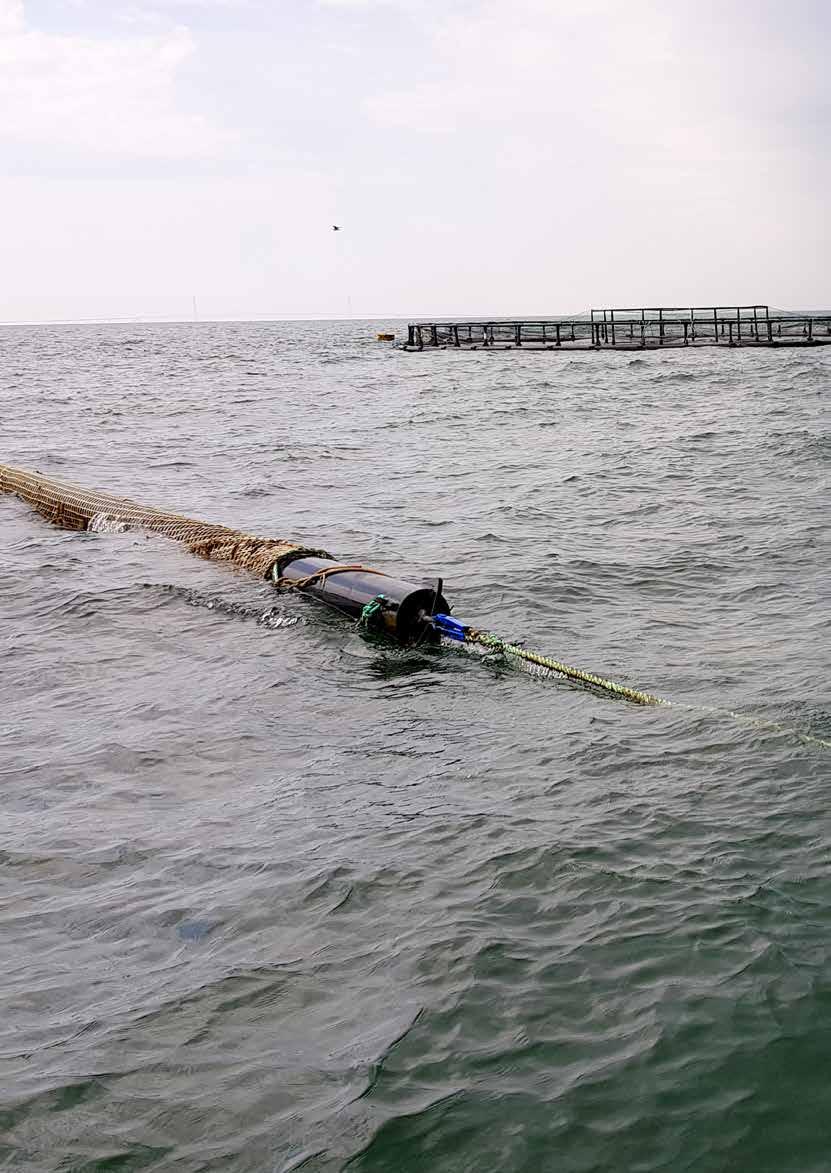3 minute read
Nets for Tropical Fish
by morenot
Next Article
SNAPPER GROUPER COBIA
general These tropical fish contributes greatly to the rise in aquaculture volumes globally. Farmed in the regions close the equator species like red snapper and tiger grouper are in very high demand not only on the local markets but across the globe.
Each species has its own unique behavior that must be considered when designing the pens. As an example grouper likes to crowd and hide in “corners” and only certain depths.
Cobia has been viewed upon as one of the mayor species in farmed fish. Some forecast has indicated that in the long term Cobia will reach same volumes salmon globally. Because of its excellent growth rate and FCR Cobia is an interesting species.
the nets Farming fish in tropical conditions means a lot fouling is growing on the pens all year round. It is important that the net pens are constructed in a way so they can withstand constant washing and cleaning.
Net pens for grouper is typically made a small square pens so the fish can follow it’s natural behavior and swin into the “corners”
why dyneema® The high degree of fouling seen in tropical waters makes Dyneema® an excellent choice. Thin twine with high strength gives the fish inside the net pens the best possible conditions. Good water flow that gives high oxygen levels and a constant supply of clean water in the net pens.
A net pen made with Dyneema® can in some cases remain up to twice as long in the water before being replaced compared to traditional materials such as nylon or polyester. That in turn provides reduction in both labor and material cost.




Nets for Tropical Fish
general Tilapia - a fresh water delicacy - is being farmed intensively across the globe. In Africa Tilapia is being farmed in net pens in some of the big lakes across the African continent. Also in South America Tilapia is being farmed in lakes – and as an example it is typical to place Tilapia farms in the hydro lakes formed behind dams in Brazil. Tilapia can be seen biting and chewing on net, twine and rope and therefore it is important to take care when designing the net pens.
Barramundi is also known as “Asian Seabass”. The fish is well domesticated and is an excellent species for farming in net pens. Barramundi farms are among other places – located in Northern Australia and South East Asia. Barramundi is a strong and sturdy fish that copes well with the strain and stress that can come from being handled, graded or moved.
the nets Net pens for tilapia farming in lakes are often set up in combination with an outer predator net. Tiger fish in Africa and Piranhas in South America are just some of the predator fish that can attack net pens with tilapia. As tilapia bite and chew on the net it is important to make sure that there are no lose twine or rope ends inside the net pen that the tilapia can catch.
why dyneema® The Dyneema® fibers special properties when it comes to superior abrasion resistance, light weight and ultra-high strength makes it the perfect match.
Not only is the Dyneema® fiber reducing damages related to fish bite, the net made from Dyneema® takes longer to get fouled that in turn ensures higher water flow and better oxygen levels which increases fish welfare and a leads to better FCR. Another clear advantage is that Dyneema® has excellent properties when it comes to keeping predators out of the net pens. Reduced service and logistic costs are elements that contribute to the fact that Dyneema® is an excellent choice for the farmers.
KINGFISH TILAPIA BARRAMUNDI

